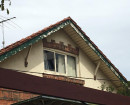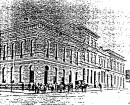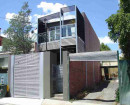Back to search results
ALBERT PARK PRIMARY SCHOOL
2-38 VICTORIA AVENUE ALBERT PARK, PORT PHILLIP CITY
ALBERT PARK PRIMARY SCHOOL
2-38 VICTORIA AVENUE ALBERT PARK, PORT PHILLIP CITY
All information on this page is maintained by Heritage Victoria.
Click below for their website and contact details.
Victorian Heritage Register
-
Add to tour
You must log in to do that.
-
Share
-
Shortlist place
You must log in to do that.
- Download report

PRIMARY SCHOOL NO. 1181 SOHE 2008

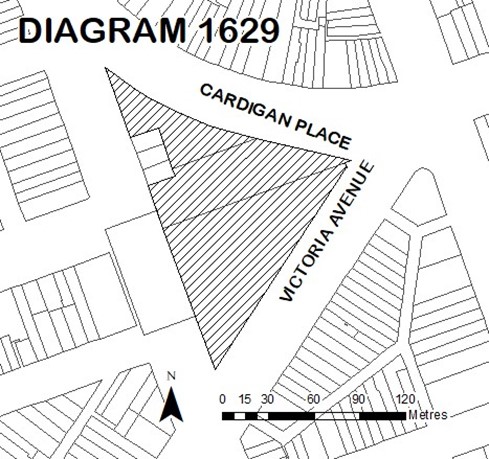
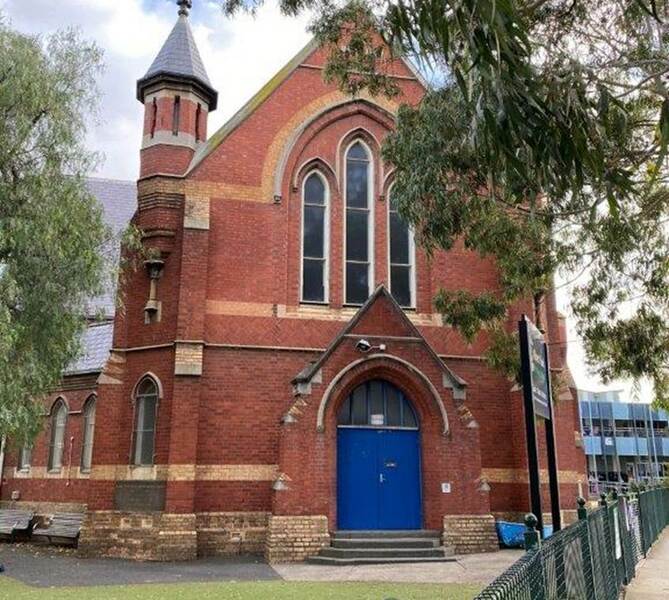
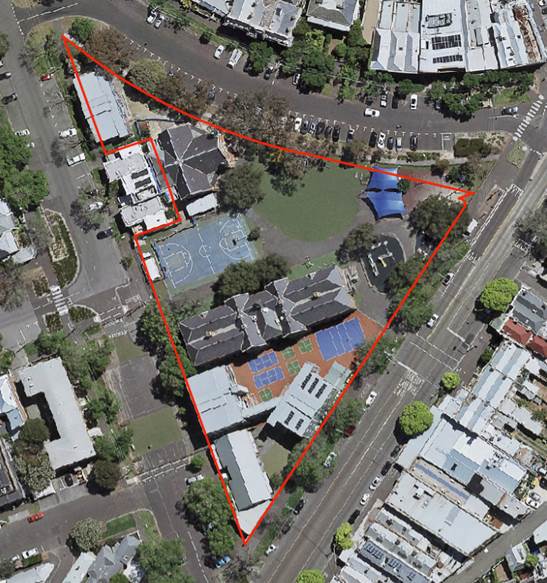

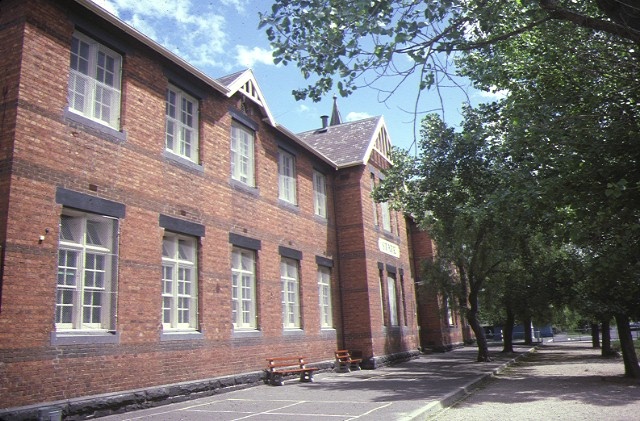
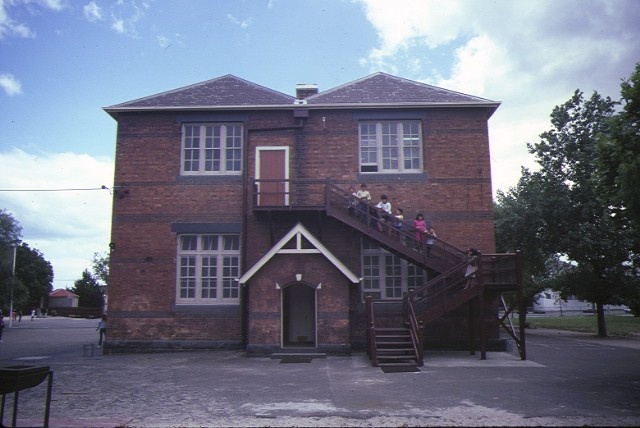
On this page:
Statement of Significance
What is significant?
Albert Park Primary School, including the 1874 Gothic building designed by Joseph Schneider and the 1890 Wesleyan church building.
How is it significant?
Albert Park Primary School is of historical and architecturalsignificance to the State of Victoria. It satisfies the following criterion for inclusion in the Victorian Heritage Register:
Criterion A
Importance to the course, or pattern, of Victoria’s cultural history.
Importance to the course, or pattern, of Victoria’s cultural history.
Criterion D
Importance in demonstrating the principal characteristics of a class of cultural places and objects
Why is it significant?
Albert Park Primary School is historically significant as a demonstration of the development of state schooling in Victoria. The 1874 school building is based on a standard design, one of several produced as part of an 1873 competition held by the new Department of Education. It has a direct association with the extensive school building program across the colony in the 1870s. The current use of the 1890 Wesleyan Church as a school building reflects the historic use of church facilities by the school, which have been recorded as early as 1886. This highlights a common practice of state schools in the late 1800s, as the Education Department rented community facilities to accommodate a large student population.
(Criterion A)
Albert Park Primary School is architecturally significant as a pivotal example of a ‘competition school’ produced as part of an 1873 competition held by the newly formed Department of Education. Its symmetrical design is particularly unusual for its length. Unlike other competition schools, Albert Park Primary School is a unique design which was not reused for other schools.
(Criterion D)
Show more
Show less
-
-
ALBERT PARK PRIMARY SCHOOL - History
Albert Park Primary School (formerly Emerald Hill State School, also known as Primary School No. 1181) was based on a standard public-school design by the architect Joseph Schneider. The design had been prepared for a competition held by the new Department of Public Instruction in 1873. Following the passing of the Education Act 1872, which made schooling free, secular and compulsory for children aged 6-15, the new Department of Public Instruction needed to build hundreds of new school buildings. The design competition produced 13 generic designs which were adapted for use across the colony.
The Albert Park Primary School building was built by Pearson and Downie and opened in April 1874. It was probably the first school building based on a competition design to be completed. The design of the school is a functional gothic notable for its lack of ornamentation. The design is symmetrical on two axes. Unlike other designs produced by the 1873 competition, Schneider’s design was never reused. Lawrence Burchell (1980, p. 96) believes that this was likely due to its awkward length, which made it too large for a normal block of land. It was also a design which could not be built in stages to accommodate growing enrolment.
Alterations were made to the building in 1907-8 when some windows were enlarged, floors renewed and galleries removed. An infant school building was completed in 1913, on the corner of Pickles and Richardson streets. It is now used by Albert Park College.
Wesleyan Church building
Early maps of the site show that Bridport Street West once ran along the north-west boundary of the school, separating it from land used by the Wesleyan Methodist Church. The first church building was constructed on this land in 1884. In 1886, Emerald Hill State School rented three rooms in this building, which were used until 1914. This reflected the common practice of the time, as schools would often rent community facilities such as halls and church buildings to accommodate a large student population.
In July 1890 a new Wesleyan Church was opened on the site. It was designed by architects Oakden, Addision and Kemp, and is characteristic of Oakden's bold polychrome gothic style. It incorporates a number of typical elements including red and cream brickwork, brick dressings, paired and multiple gothic windows, stone or cement corbels to widen the bases of gable end and the exceptional octagonal towers or barbicans. It is a very good example of the small group of centrally planned amphitheatre form churches in Victoria. It is associated with the church's patron John Danks, a committed Methodist and a prominent Melbourne businessman. The church has been renovated and the organ removed.
In 1970 the Education Department purchased the 1890 Wesleyan Church building for use by the school. The same year, the school was renamed Albert Park Primary School. Shortly afterwards, the section of road which divided the school and church buildings was closed and repurposed as school grounds.
Selected bibliography
Blake L J (ed) (1973) Vision and Realisation: A Centenary History of State Education in Victoria, The Government Printer, Melbourne.
Burchell L (1980) Victorian schools: a study in colonial government architecture, 1837-1900, Melbourne University Press, Melbourne.
Peterson R (1993) Historic Government Schools: a Comparative Study June 1993, Department of Planning and Development, Melbourne.
ALBERT PARK PRIMARY SCHOOL - Assessment Against Criteria
Criterion
Albert Park Primary School is of historical and architecturalsignificance to the State of Victoria. It satisfies the following criterion for inclusion in the Victorian Heritage Register:
Criterion A
Importance to the course, or pattern, of Victoria’s cultural history.
Criterion D
Importance in demonstrating the principal characteristics of a class of cultural places and objects
ALBERT PARK PRIMARY SCHOOL - Permit Exemptions
General Exemptions:General exemptions apply to all places and objects included in the Victorian Heritage Register (VHR). General exemptions have been designed to allow everyday activities, maintenance and changes to your property, which don’t harm its cultural heritage significance, to proceed without the need to obtain approvals under the Heritage Act 2017.Places of worship: In some circumstances, you can alter a place of worship to accommodate religious practices without a permit, but you must notify the Executive Director of Heritage Victoria before you start the works or activities at least 20 business days before the works or activities are to commence.Subdivision/consolidation: Permit exemptions exist for some subdivisions and consolidations. If the subdivision or consolidation is in accordance with a planning permit granted under Part 4 of the Planning and Environment Act 1987 and the application for the planning permit was referred to the Executive Director of Heritage Victoria as a determining referral authority, a permit is not required.Specific exemptions may also apply to your registered place or object. If applicable, these are listed below. Specific exemptions are tailored to the conservation and management needs of an individual registered place or object and set out works and activities that are exempt from the requirements of a permit. Specific exemptions prevail if they conflict with general exemptions. Find out more about heritage permit exemptions here.Specific Exemptions:Specific Exemptions
The works and activities below are not considered to cause harm to the cultural heritage significance of the Place or object namesubject to the following guidelines and conditions:
Guidelines
- Where there is an inconsistency between permit exemptions specific to the registered place or object (‘specific exemptions’) established in accordance with either section 49(3) or section 92(3) of the Act and general exemptions established in accordance with section 92(1) of the Act specific exemptions will prevail to the extent of any inconsistency.
- In specific exemptions, words have the same meaning as in the Act, unless otherwise indicated. Where there is an inconsistency between specific exemptions and the Act, the Act will prevail to the extent of any inconsistency.
- Nothing in specific exemptions obviates the responsibility of a proponent to obtain the consent of the owner of the registered place or object, or if the registered place or object is situated on Crown Land the land manager as defined in the Crown Land (Reserves) Act 1978, prior to undertaking works or activities in accordance with specific exemptions.
- If a Cultural Heritage Management Plan in accordance with the Aboriginal Heritage Act 2006 is required for works covered by specific exemptions, specific exemptions will apply only if the Cultural Heritage Management Plan has been approved prior to works or activities commencing. Where there is an inconsistency between specific exemptions and a Cultural Heritage Management Plan for the relevant works and activities, Heritage Victoria must be contacted for advice on the appropriate approval pathway.
- Specific exemptions do not constitute approvals, authorisations or exemptions under any other legislation, Local Government, State Government or Commonwealth Government requirements, including but not limited to the Planning and Environment Act 1987, the Aboriginal Heritage Act 2006, and the Environment Protection and Biodiversity Conservation Act 1999 (Cth). Nothing in this declaration exempts owners or their agents from the responsibility to obtain relevant planning, building or environmental approvals from the responsible authority where applicable.
- Care should be taken when working with heritage buildings and objects, as historic fabric may contain dangerous and poisonous materials (for example lead paint and asbestos). Appropriate personal protective equipment should be worn at all times. If you are unsure, seek advice from a qualified heritage architect, heritage consultant or local Council heritage advisor.
- The presence of unsafe materials (for example asbestos, lead paint etc) at a registered place or object does not automatically exempt remedial works or activities in accordance with this category. Approvals under Part 5 of the Act must be obtained to undertake works or activities that are not expressly exempted by the below specific exemptions.
- All works should be informed by a Conservation Management Plan prepared for the place or object. The Executive Director is not bound by any Conservation Management Plan and permits still must be obtained for works suggested in any Conservation Management Plan.
Conditions
- All works or activities permitted under specific exemptions must be planned and carried out in a manner which prevents harm to the registered place or object. Harm includes moving, removing or damaging any part of the registered place or object that contributes to its cultural heritage significance.
- If during the carrying out of works or activities in accordance with specific exemptions original or previously hidden or inaccessible details of the registered place are revealed relating to its cultural heritage significance, including but not limited to historical archaeological remains, such as features, deposits or artefacts, then works must cease and Heritage Victoria notified as soon as possible.
- If during the carrying out of works or activities in accordance with specific exemptions any Aboriginal cultural heritage is discovered or exposed at any time, all works must cease and the Secretary (as defined in the Aboriginal Heritage Act 2006) must be contacted immediately to ascertain requirements under the Aboriginal Heritage Act 2006.
- If during the carrying out of works or activities in accordance with specific exemptions any munitions or other potentially explosive artefacts are discovered, Victoria Police is to be immediately alerted and the site is to be immediately cleared of all personnel.
- If during the carrying out of works or activities in accordance with specific exemptions any suspected human remains are found the works or activities must cease. The remains must be left in place and protected from harm or damage. Victoria Police and the State Coroner’s Office must be notified immediately. If there are reasonable grounds to believe that the remains are Aboriginal, the State Emergency Control Centre must be immediately notified on 1300 888 544, and, as required under s.17(3)(b) of the Aboriginal Heritage Act 2006, all details about the location and nature of the human remains must be provided to the Secretary (as defined in the Aboriginal Heritage Act 2006).
Exempt works and activities
Buildings constructed or moved to the site post 1990 (this exemption does not apply to buildings which link with or abut the 1874 school building or 1890 church building)- All internal works
- Removal or demolition.
Buildings which link with or abut the 1874 school building or 1890 church building- Internal works, provided that there is no change to the external building envelope and that no works intersect with the 1874 school building or 1890 church building.
- Landscape/ outdoor areas
- Installation and replacement of shade sail fabric and supporting structure
- Replacement of playground equipment and outdoor furniture in the same location
- Pruning of all trees to ensure safety
- Removal, replacement and installation of new ground surfacing treatments (for example, asphalt, safety matting) provided it is not within five metres of the 1874 school building or 1890 church building.
ALBERT PARK PRIMARY SCHOOL - Permit Exemption Policy
It is recommended that a Conservation Management Plan is utilised to manage the place/object type in a manner which respects its cultural heritage significance.
-
-
-
-
-
HOTEL VICTORIA
 Victorian Heritage Register H0820
Victorian Heritage Register H0820 -
BILTMORE (ALBERT PARK)
 Victorian Heritage Register H0475
Victorian Heritage Register H0475 -
ALBERT PARK RAILWAY STATION COMPLEX
 Victorian Heritage Register H1558
Victorian Heritage Register H1558
-
'Boonderoo', House and Outbuildings
 Greater Bendigo City
Greater Bendigo City -
'Riverslea' house
 Greater Bendigo City
Greater Bendigo City -
1 Adam Street
 Yarra City
Yarra City
-
-






